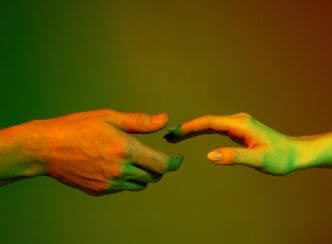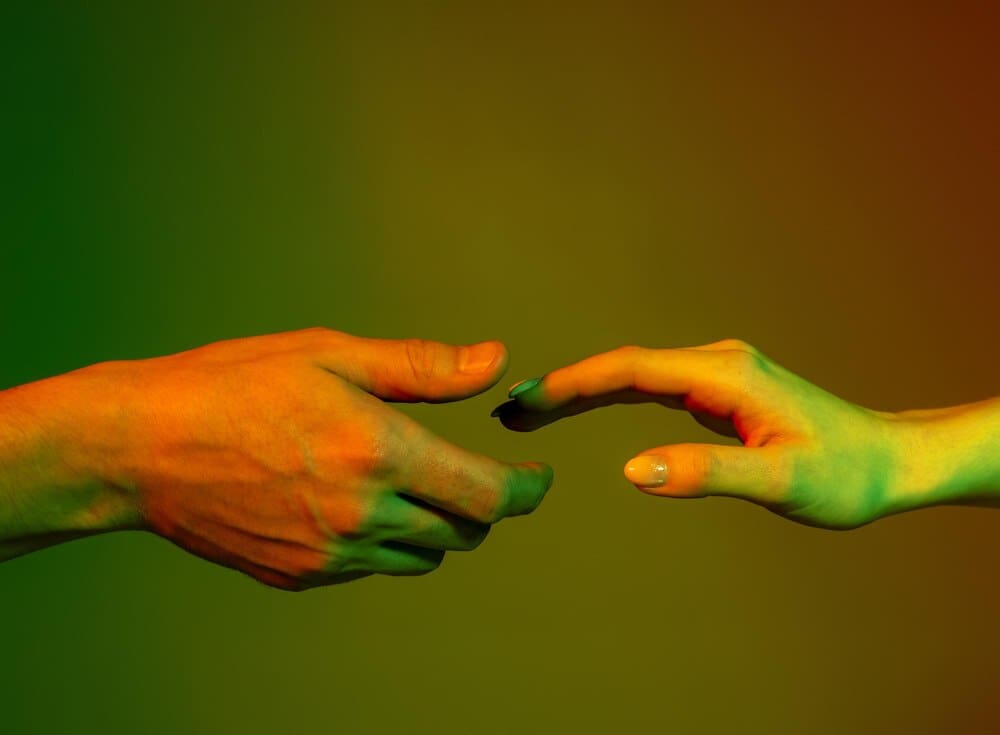Kuta Matching, known in Vedic Astrology as Guna Milan, is a foundational system used primarily in India to evaluate the marital compatibility between two individuals. By analyzing the placement of the Moon in the birth charts of a prospective bride and groom, this ancient method calculates a compatibility score out of 36 points, or Gunas. This score is derived from eight distinct compatibility tests, collectively called the Ashtakoota, which assess everything from spiritual and temperamental alignment to sexual chemistry and the potential for healthy progeny. For centuries, this system has served as a crucial first step in arranging marriages, providing families and couples with a cosmic roadmap to understand the potential for a harmonious, prosperous, and long-lasting union before making a lifelong commitment.
What is Ashtakoota Milan?
The term Ashtakoota Milan is the formal name for this compatibility analysis, with “Ashta” meaning eight and “Koota” meaning aspects or tests. The entire system is therefore built upon evaluating eight critical pillars of a relationship. The score generated from these tests is measured in Gunas, which translates to qualities or attributes.
At the heart of this entire process is the Moon (Chandra). In Vedic astrology, the Moon represents the mind, emotions, consciousness, and one’s immediate response to the world. A person’s true emotional and psychological nature is revealed by their Moon sign (the zodiac sign the Moon was in at birth) and, more specifically, their Nakshatra.
Nakshatras are the 27 lunar mansions or star constellations through which the Moon travels. Each Nakshatra has its own unique characteristics, deity, and symbolism. The Kuta system works by comparing the Nakshatra of the prospective bride with that of the groom, creating a detailed and nuanced picture of how their core natures will interact.
The Eight Kutas: A Detailed Breakdown
The 36-point system is not arbitrary; it is a cumulative score derived from the eight Kutas, each carrying a different weight. A high score in a heavily weighted Kuta is more significant than a high score in a lesser one. Here is a comprehensive look at each of the eight tests.
1. Varna Kuta (1 Point)
This Kuta assesses the spiritual and ego compatibility between partners. It classifies the 12 zodiac signs into four Varnas, representing different work ethics and spiritual inclinations: Brahmin (priestly, intellectual), Kshatriya (warrior, administrative), Vaishya (merchant, commercial), and Shudra (service-oriented). A perfect match is when both partners belong to the same Varna. It is also considered acceptable if the groom’s Varna is higher than the bride’s, but not the other way around, as this could lead to ego clashes and a power imbalance.
2. Vashya Kuta (2 Points)
Representing mutual attraction and the power dynamic, Vashya Kuta determines who will be the more dominant or influential partner. The zodiac signs are categorized into five types: Manava (human), Vanchar (wild animal), Chatushpad (quadruped), Jalchar (water animal), and Keeta (insect). A high score indicates a strong magnetic pull and a natural willingness to accommodate one another. A low score might suggest a struggle for control or a lack of mutual respect, making the relationship feel more like a power play.
3. Tara Kuta (3 Points)
Also known as Dina Kuta, this aspect relates to the health, well-being, and shared destiny of the couple. It is calculated by counting the Nakshatra of one person from the other and dividing the number by nine. If the remainder is 3, 5, or 7, it is considered inauspicious. A good score in Tara Kuta suggests that the couple will bring each other good fortune and enjoy a long, healthy life together. A poor score can indicate shared misfortune or frequent health issues after marriage.
4. Yoni Kuta (4 Points)
This is one of the most critical Kutas for gauging physical and sexual compatibility. Each of the 27 Nakshatras is assigned an animal symbol, such as a horse, elephant, tiger, or snake. This Kuta compares these animal symbols to determine the level of primal, instinctual attraction. If the animals are friendly (e.g., Horse and Elephant), the score is high. If they are sworn enemies (e.g., Cat and Rat or Cow and Tiger), the score is zero, indicating sexual disharmony, dissatisfaction, or conflicting desires.
5. Graha Maitri Kuta (5 Points)
Translating to “Planetary Friendship,” this Kuta examines the psychological and mental rapport between the partners. It is based on the friendship or enmity between the ruling planets of the couple’s Moon signs (Rashi). If the lords of their Moon signs are friends (e.g., Sun and Jupiter) or the same planet, it indicates a natural friendship, shared interests, and easy communication. If the lords are enemies (e.g., Sun and Saturn), it suggests a fundamental difference in worldview that can lead to arguments and misunderstandings.
6. Gana Kuta (6 Points)
This highly significant Kuta evaluates the core temperament and nature of the individuals. The Nakshatras are divided into three Ganas or temperaments: Deva (divine, pious, and gentle), Manushya (human, practical, and worldly), and Rakshasa (demonic, aggressive, and headstrong). A marriage between two people of the same Gana is ideal, as they share a similar outlook on life. A match between a Deva and Manushya is also considered good. However, a match between a Deva and a Rakshasa is considered highly incompatible, as their fundamental natures will perpetually clash.
7. Rashi Kuta or Bhakoot (7 Points)
Bhakoot Kuta is a vital measure of emotional compatibility, family happiness, and overall prosperity. It analyzes the angular relationship between the couple’s Moon signs. Auspicious placements, like a 1-7 (opposite signs), 3-11, or 4-10 axis, receive full points. However, certain placements are considered highly inauspicious. A 6-8 (Shatashtak) relationship can bring conflicts and health issues, while a 2-12 (Dwirdwadash) relationship can lead to financial loss and separation. A zero score here, known as Bhakoot Dosha, is a major red flag.
8. Nadi Kuta (8 Points)
This is the most heavily weighted Kuta, carrying a maximum of eight points, and it primarily governs health, genetics, and the capacity for having healthy children. The Nakshatras are classified into three Nadis, which correspond to the three primary Ayurvedic humors: Aadi (Vata – wind), Madhya (Pitta – bile), and Antya (Kapha – phlegm). For a compatible match, the bride and groom must belong to different Nadis. If both have the same Nadi, it results in a severe affliction called Nadi Dosha, which is believed to cause infertility, health problems for the children, or severe disharmony between the couple.
What Does the Final Score Mean?
After each of the eight Kutas is scored, the points are tallied to produce a final Guna Milan score out of 36. This score is generally interpreted as follows:
- Below 18 Gunas: This match is not recommended. It indicates deep-seated incompatibilities that are likely to cause significant conflict, distress, and potential separation.
- 18 to 24 Gunas: This is considered an average or acceptable match. While there is a basis for a relationship, it will require significant compromise, patience, and effort from both partners to overcome inherent challenges.
- 25 to 32 Gunas: This is a good to very good match. The couple shares strong compatibility across several key areas, indicating a high potential for a happy, harmonious, and successful marriage.
- Above 32 Gunas: This is an excellent or ideal match. It suggests a profound karmic connection and deep-seated compatibility on almost every level, promising a truly fulfilling and supportive partnership.
Is Guna Milan the Final Word? The Bigger Picture
While the Guna Milan system is a powerful and remarkably accurate tool, it is crucial to understand that it is not the sole determinant of a successful marriage. A seasoned astrologer will never make a final judgment based on this score alone. It is one piece of a much larger puzzle.
The Importance of Mangal Dosha
One of the most critical factors checked alongside Guna Milan is Mangal Dosha (or Kuja Dosha). This affliction is caused by the placement of Mars in the 1st, 4th, 7th, 8th, or 12th house of a birth chart. An afflicted Mars can bring aggression, conflict, accidents, or even harm to the spouse. A good Guna score can be completely overshadowed by a severe and unmatched Mangal Dosha.
Overall Chart Analysis
A holistic analysis is paramount. An astrologer must also assess the strength of the 7th house (the house of marriage), the condition of its ruling planet, and the placement of key relationship planets like Venus (the significator of love and romance) and Jupiter (the significator of wisdom, fortune, and the husband in a female’s chart). Furthermore, the Navamsa or D9 chart, which is a divisional chart specifically for marriage, must be thoroughly examined to understand the true promise and nature of the marital bond.
Remedies and Cancellations
Vedic astrology is a science of remedies as much as it is of prediction. Many “doshas” or flaws, including Bhakoot Dosha and even Nadi Dosha, have specific cancellations (pariharas) based on other planetary placements. For example, if a couple has Bhakoot Dosha but their Moon sign lords are friends, the negative effect is significantly reduced. In cases where doshas persist, specific pujas (ritual worship) or other astrological remedies can be performed to mitigate the malefic effects.
A Timeless Tool for Modern Relationships
In conclusion, the Kuta Matching system is a profound and time-tested framework for understanding the foundational dynamics of a relationship. It moves beyond superficial attraction to analyze the deep-seated energetic and psychological compatibility between two souls. By examining the eight core pillars of a partnership, from temperament to health and destiny, it provides an invaluable roadmap for navigating the complexities of marriage. While a high Guna score is certainly desirable, it is the combination of this score with a holistic chart analysis and the wisdom of an experienced astrologer that offers the most complete and actionable guidance for building a lasting and joyful union.








